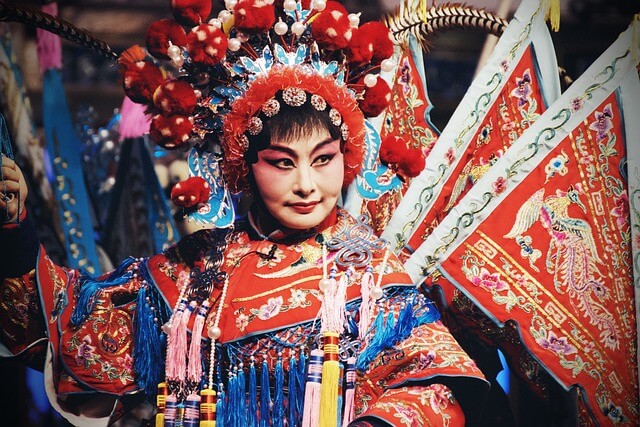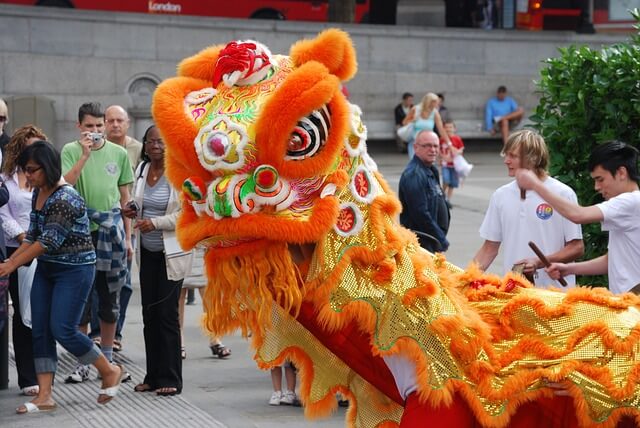
Are you captivated by the allure of dragon festivals? If so, you’re in the right place.
These lively celebrations, filled with colorful parades, boat races, and traditional performances, draw visitors from across the globe.
In this guide, we’ll journey through China and Japan, uncovering the rich histories and vibrant festivities that make these dragon festivals so unique.
Common Questions About Dragon Festivals
- What are dragon festivals?
- Where can I experience these festivals?
- What activities can I expect to see?
- How do these festivals differ between China and Japan?
- When is the best time to visit?
- How do I prepare for attending these festivals?
- What are the cultural significance of these festivals?
What Are Dragon Festivals?
Dragon festivals are celebrations rooted in folklore, history, and cultural traditions.
They often include dragon boat races, parades, dances, and various other performances.
These festivals serve to commemorate historical events, honor deities, and bring communities together in celebration.
Dragon Festivals in China
China, with its rich tapestry of history and culture, hosts some of the most renowned dragon festivals.
Here, we’ll delve into the details of two of the most significant ones:
Dragon Boat Festival (Duanwu Festival)
- When: Fifth day of the fifth lunar month (usually June).
- Where: Across China, with major celebrations in Guangdong, Hong Kong, and Hangzhou.
- Activities: Dragon boat races, eating sticky rice dumplings (zongzi), and hanging medicinal herbs.
Historical Background: The Dragon Boat Festival, or Duanwu Festival, commemorates the death of the famous Chinese poet and minister Qu Yuan. In 278 BCE, Qu Yuan, in despair over the capture of his home state of Chu, drowned himself in the Miluo River.
The locals, in an attempt to save him or retrieve his body, raced out in boats and threw rice dumplings into the river to keep the fish from eating his body.
This tradition evolved into the modern-day dragon boat races and the making of zongzi.
Activities and Celebrations:
- Dragon Boat Races: Teams paddle vigorously in elaborately decorated dragon boats, racing to the beat of drums. These races are not only a test of speed but also of teamwork and endurance.
- Making and Eating Zongzi: Families prepare and eat zongzi, which are glutinous rice dumplings wrapped in bamboo leaves. These can be filled with sweet or savory ingredients, like red bean paste or pork.
- Hanging Mugwort and Calamus: It’s traditional to hang bundles of these herbs at the door to ward off evil spirits and disease.
Personal Story: “I remember my first Dragon Boat Festival in Hong Kong. The excitement in the air was palpable as teams prepared their boats. I joined a local family for a zongzi-making session, and they shared stories of how this tradition honors the ancient poet Qu Yuan. It was a heartwarming experience that deepened my appreciation for Chinese culture.”
Lantern Festival (Yuan Xiao Festival)
- When: 15th day of the first lunar month (February/March).
- Where: Nationwide, with notable events in Beijing, Nanjing, and Shanghai.
- Activities: Dragon dances, lantern displays, solving riddles written on lanterns, and eating tangyuan (sweet rice balls).
Historical Background: The Lantern Festival marks the final day of the Chinese New Year celebrations.
It has roots in various legends, including one about a maid named Yuan Xiao, who was allowed to reunite with her family after lighting lanterns in the emperor’s palace.
Activities and Celebrations:
- Lantern Displays: Streets are adorned with colorful lanterns, often in the shapes of dragons, animals, and flowers. Some lanterns contain riddles, and solving them is a popular activity.
- Dragon Dances: Performers mimic the movements of dragons using large, flexible puppets, accompanied by the rhythmic beating of drums and clashing of cymbals.
- Eating Tangyuan: Families gather to eat tangyuan, sweet glutinous rice balls filled with sesame paste, red bean paste, or peanut butter. The round shape symbolizes unity and family togetherness.
Personal Story: “Walking through the lantern-lit streets of Nanjing during the Lantern Festival felt magical. The intricate dragon lanterns, each telling a different story, created an atmosphere of wonder and joy. I tried my hand at solving a few riddles and even joined a group making tangyuan. It was a night of laughter, light, and cultural immersion.”
Dragon Festivals in Japan
Japan also celebrates its own unique dragon festivals, which blend local traditions with influences from Chinese culture.
Nagasaki Kunchi Festival
- When: October 7-9.
- Where: Nagasaki.
- Activities: Dragon dances, traditional Japanese performances, and vibrant street parades.
Historical Background: The Nagasaki Kunchi Festival has been celebrated for over 400 years and reflects Nagasaki’s diverse cultural history, including influences from Chinese, Dutch, and Portuguese traders.
Activities and Celebrations:
- Dragon Dances: Known as “Ja Odori,” these dragon dances are performed to honor local deities and bring good fortune. The performers’ skill and the dragons’ elaborate designs make this a highlight of the festival.
- Traditional Performances: The festival features various traditional Japanese dances and music, showcasing the rich cultural heritage of Nagasaki.
- Street Parades: Floats decorated with themes from Nagasaki’s history and culture parade through the streets, accompanied by musicians and dancers.
Personal Story: “During the Nagasaki Kunchi Festival, I was mesmerized by the energetic dragon dances. The blend of Chinese and Japanese influences in the performances highlighted the rich cultural tapestry of Nagasaki. I joined the locals in cheering for the performers and felt a deep connection to the community spirit.”
Ryukyu Dragon Boat Festival
- When: May.
- Where: Okinawa.
- Activities: Dragon boat races, traditional music, and cultural performances.
Historical Background: The Ryukyu Dragon Boat Festival, or “Haarii,” has its roots in the maritime culture of the Ryukyu Kingdom. It was originally a prayer for safe voyages and abundant catches for fishermen.
Activities and Celebrations:
- Dragon Boat Races: Teams of rowers compete in dragon boat races, displaying their strength and coordination. The races are a tribute to the seafaring heritage of Okinawa.
- Traditional Music and Dance: The festival features performances of Okinawan music and dance, adding to the festive atmosphere.
- Cultural Exhibits: There are displays of traditional crafts and food, offering visitors a taste of Okinawan culture.
Personal Story: “Experiencing the Ryukyu Dragon Boat Festival in Okinawa was a thrill. The races were intense, and the island’s unique traditions added a special charm to the event. I spent the day exploring cultural exhibits and even tried my hand at playing a traditional Okinawan instrument.”
Planning Your Visit
Best Time to Visit: The timing depends on which festival you want to experience. Research the specific dates and plan accordingly.
Travel Tips:
- Book Early: These festivals attract large crowds, so book your accommodations and transportation well in advance.
- Join Local Tours: Guided tours can offer deeper insights into the cultural significance and history of the festivals.
- Respect Local Customs: Participate respectfully, especially in ceremonies and traditional activities.
How to Prepare:
- Research: Learn about the specific customs and history of the festival you plan to attend.
- Pack Appropriately: Bring comfortable clothing and shoes, as festivals often involve a lot of walking and standing.
- Stay Hydrated and Nourished: Festivals can be physically demanding, so carry water and snacks.
- Engage Locals: Don’t be shy to ask locals about the best spots to watch the events or for recommendations on what to see and do.
Cultural Significance of Dragon Festivals
China:
- Dragon Boat Festival: Emphasizes themes of loyalty, patriotism, and the fight against corruption, inspired by Qu Yuan’s story.
- Lantern Festival: Symbolizes the end of the Chinese New Year celebrations, focusing on family unity and social harmony.
Japan:
- Nagasaki Kunchi Festival: Reflects the multicultural history of Nagasaki, celebrating the city’s diverse heritage.
- Ryukyu Dragon Boat Festival: Honors Okinawa’s maritime history and the spiritual connection between the people and the sea.

Engage with Us!
Have you attended a dragon festival in Asia? Share your experiences in the comments below! Planning a trip? Ask us any questions, and we’d be happy to help. Don’t forget to share this guide with friends who might be interested in these amazing cultural experiences.
Stay Updated
We regularly update our content to ensure you have the latest information on Asia’s dragon festivals. Bookmark this page and check back for new insights and travel tips!
Conclusion
Asia’s dragon festivals are a testament to the region’s rich cultural heritage and vibrant community spirit.
Whether you’re drawn to the rhythmic beat of the dragon boat races or the dazzling glow of lanterns, these festivals offer unforgettable experiences.
By understanding the history, cultural significance, and local customs, you’ll gain a deeper appreciation and enjoy your journey through these captivating traditions.
Prepare to immerse yourself in the magic of dragon festivals from China to Japan.
Embrace the excitement, participate in the activities, and create memories that will last a lifetime. Happy travels!
FAQs
What are the main ways the Dragon Boat Festival is celebrated in different Asian countries?
- Japan celebrates it as “Tango no Sekku” or Boys’ Festival, hanging carp flags, eating zongzi and drinking calamus wine
- South Korea has the month-long Gangneung Danoje Festival with shamanistic rituals, mask dances, folk songs and wrestling
- Vietnam eats zongzi, drinks realgar wine, collects herbal medicines and visits teachers and ancestors
- Malaysia eats zongzi with unique local fillings like Nyonya zongzi, races dragon boats, and holds zongzi wrapping competitions
- Singapore races dragon boats, eats Nyonya rice dumplings, and holds dragon boat carnivals
How do the zongzi (rice dumplings) differ across Asia?
- Japanese zongzi are made of grated rice instead of glutinous rice
- Thai zongzi are divided into vegetarian and eight-treasure meat dumplings with a variety of fillings
- Malaysian Nyonya zongzi have unique fillings like three-layered pork, peanuts, dried shrimp, and local spices
- Singaporean Nyonya rice dumplings use coriander powder, lean meat, and winter melon
- Vietnamese square rice dumplings are made with turmeric glutinous rice
What are some other common customs and beliefs around the festival?
- Hanging calamus and wormwood leaves on doors to repel insects and bring health
- Wearing perfume pouches or 5-colored silk ribbons to ward off evil
- Drinking realgar wine or water to prevent disease
- Trying to make an egg stand at exactly noon for good luck
How has the festival evolved in different countries?
- While sharing the same origin, the festivals have developed unique local characteristics over time
- The participation of different ethnic groups has increased in some countries like Malaysia
- The festivals are now supported by governments as important cultural events
When did the Dragon Boat Festival become an international sport?
- Dragon boat racing has been a folk custom in southern China for over 2,000 years
- It has since spread to many countries and become a popular international sport
- Major cities in the US, Canada, Germany and other countries now hold annual dragon boat races
Leave a Reply